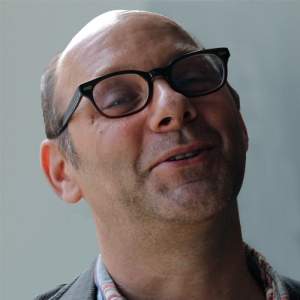(left to right) Stephen Backer, Lucas Gonze, Jacob Ritvo / Photo Courtesy of 2ndline.tv
Creativity permeates the entire San Francisco Bay Area. Its tech startup culture attracts smart, driven individuals and encourages risk-taking, experimentation and big ideas. And whether you are a tech-newbie, tech-savvy or even a bit of a tech-skeptic, this creative spirit is quite something to witness. Everyday, a range of ventures emerge from the bustling startup haven—from practical, useful tools all the way to the obscure and sometimes, even trivial. And then, there are the game changers. Those ideas that have the potential to alter the landscape and trajectory of a particular field. Stephen Backer, Jacob Ritvo and Lucas Gonze of 2ndline.tv have one of these pioneering projects on their hands. They have built a digital partner for the performing arts community—it is cool and original, while also being valuable and needed. 2ndline.tv is an absolute game changer.
For some time now, Backer and the 2ndline team have been contemplating how the digital world and the performing arts intersect. And the relationship between the two is complex. On the one hand, there is more content online than ever before, access to it is immediate and much of it is free of charge. While this digital onslaught certainly has its benefits, it also creates real challenges for both artists and audiences. How can artists remain in the center of their work; in control; in the driver’s seat, so to speak? In a prolific digital world, how can curation, scarcity, choice and value be considered from the audience perspective? And is there a new way to think about how creators and viewers communicate in our existing technological climate? Faced with these challenging questions, Backer, Ritvo, Gonze and the entire 2ndline team dove in headfirst. And their state-of-the-art response is a must for every performing artist.
2ndline.tv live streams the performing arts in an appointmentbased, pay-to-view model. Streamed events span artistic disciplines, styles and genres, and content-wise, include actual live performances, recently videoed pieces and archived material. Here’s how it works. Creators (choreographers, directors, musicians, spoken word artists, etc.) go to the website, click on ‘get started’ and begin to set up their event through 2ndline’s recently launched on-boarding system. The artist controls each step of the process—uploading their finished video, setting ticket prices, attaching program notes and deciding when the content will air. Then, audiences browse through 2ndline’s list of upcoming shows, select their preferred performance, purchase a virtual ticket and watch at the appointed date and time on their personal computer (and soon, on mobile devices). Viewers for each streaming event watch together, on the same date, at the same time. Backer describes 2ndline.tv as a digital venue for the working artist, “an efficient and innovative platform to help run your artistic business; building your audience, distributing your work on a new level and generating revenue.”
Using 2ndline.tv’s digital platform can open many doors for choreographers. How you present your content is one of them. Could be that you are wanting to re-mount your latest piece. Perhaps your company has historic content that you want to revive. Or maybe you already showed an event on 2ndline and want to re-broadcast it. The streaming platform gives you a digital option, one that doesn’t come with the expense of a live theater production. 2ndline.tv can also help you build your audience base. With 2ndline, you can reach a range of different viewers—those who want to see your work again, those who missed it the first time around or those who live elsewhere. And, 2ndline does not limit the number of virtual viewers for any of their streamed events.
Backer notes that 2ndline.tv meets artistic needs, “take recent content or what is sitting in your archive and turn it into a live shared event with a geographically diverse audience.” Even marketing and promotion get a boost—2ndline promotes your streamed event on their website while you simultaneously spread the word through your own social and artistic networks. 2ndline. tv is a win for artists—an easy to use system that is inline with your interests, providing a host of benefits in one convenient and dynamic space: exposure, audience development and earnings (the majority of revenue goes directly back to the artists).
But 2ndline is more than logistics and details, it is a comprehensive approach to performing arts in the digital world. The 2ndline team wants to support, nurture and care for artists. They want to deliver “powerfully moving shared experiences for creators and the audiences,” says Backer. A little background about the company name helps further clarify what 2ndline is all about. The term ‘2ndline’ comes from a well-known New Orleans music phenomenon. While groups of musicians (referred to as the first line) parade through the street, passers-by, fans and neighbors join them, following behind, and forming ‘the second line’—a practice of active group participation as well as a response to an artistic presence. Backer explains that they are cultivating another type of second line, “one that complements and supports live performance.” And the word complement is key here. 2ndline. tv’s digital platform is not meant to replace the live performing arts. Rather, this offers a parallel way to experience art, “a digital second-line—a spontaneous moment of community around shared performance.”
A year in, feedback from early 2ndline adopters (both artists and viewers) is of utmost importance. Data reveals not only how a product is functioning but also the users’ impressions, perceptions and observations. Through detailed surveys, the 2ndline team has been able to get an inside look at their user experience. And the response has been fantastic; better than they had expected. From a systems standpoint, users reported that the 2ndline platform performed well; it was straightforward, easy to use and made sense. But for Backer, the more telling and revealing responses were how artists and viewers felt before, during and after the livestreamed events. Participants noted a deep sense of involvement, presence, and attention to the work; like they were really part of something, actively sharing in an artistic project.
After hearing such positive and glowing feedback, I decided I had better experience 2ndline.tv for myself. Here’s what I discovered after using the live streaming digital platform. First, 2ndline’s system is completely user-friendly. In no time at all, I had gone to the website, chosen a performance, bought my ticket and added it to my calendar. Almost immediately, I received an email that included a receipt and a link to the show. At 8:30pm on April the 17th, I clicked on that link and settled in to watch a live feed of LA-based Heidi Duckler Dance Theatre’s From Time to Time…At the Oasis. A mobile, site-specific work, Duckler’s piece is currently traveling to various Cal State University campuses and this third installment took place at CSU-Dominguez Hills. It wasn’t possible for me to be there in person, but thanks to 2ndline, not only did I get to see the show, it was like I was sitting in the live audience. The highlight of my experience was using the interactive comment interface that is built into 2ndline’s digital platform (which can also be conveniently turned off if viewers prefer). During the performance, the virtual audience is encouraged to post thoughts and ask questions about the work. Once you type a comment and hit enter, your post pops up at the bottom of the screen while the dance continues in the background. Creators can also login to see the real-time comments and chat with the virtual audience. For Duckler’s piece, viewers reacted to the choreographic movement and its narrative implications, asked questions about the music selections, and reflected on the set and lighting design. Active online conversation about the work while the dance was actually happening—now that is audience engagement for the twenty-first century.
In San Francisco’s startup mecca, days are filled with computer code and terms like venture capital, pitch deck and runway dominate conversations. In the dance community, technique class is the everyday practice and conversations center around choreography and rehearsals. Seems like two very different worlds. 2ndline.tv brings the two spheres together, in an interdependent and mutually beneficial relationship. So, if you are looking to revive archived material, show a recent piece again, engage with your audience, connect with other artists, earn income and reach new viewers, your work should be on 2ndline.tv.
For more information and to see a list of upcoming shows, please visit 2ndline.tv.
This article appeared in the June 2014 issue of In Dance.




